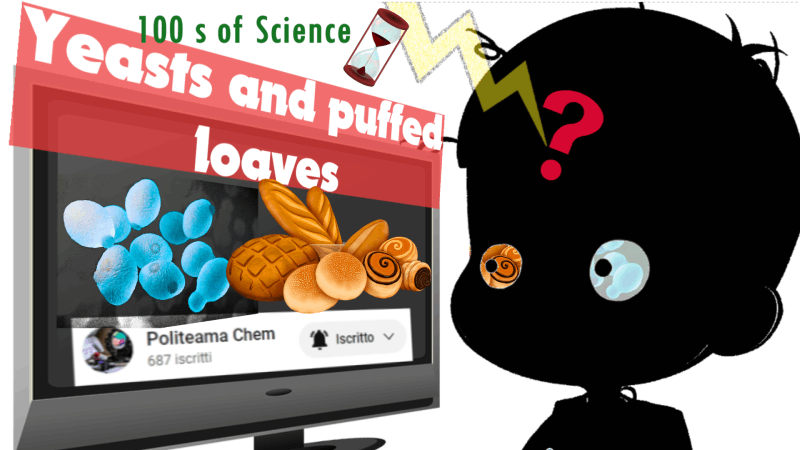What are yeasts?
The yeasts employed in leavening are actually living beings even if they look like powder or crumbly cubes. They are, indeed,
unicellular organisms with the scientific name of Saccharomyces cerevisiae.
When looked under a microscope, yeasts appear like egg-shaped cells with a diameter from 5 to 10 micrometers (Figure 1).

Where are they employed?
At the grocery store, they are sold in the form of fresh yeast (cubes) or dry yeast (powder). They have been employed in cooking with several purposes: brewing, winemaking, breadmaking including all the baking products, such as delicious pastries. In this article, we are going to focus on yeasts used as leavening agents in order to answer the question: How can yeasts inflate our beloved loaves?
How does leavening take place?
In bread making, the fresh yeast is added to the flour with a percentage from 1 to 4% in order to make the dough rise. Indeed, the word yeast comes from the Indo-European root yes meaning ‘boil’, ‘foam’ or ‘bubble’. Even if in bread making the amount of yeast looks very low compared to the amount of flour, it is actually enough to make the bread rise and get a soft and fluffy crumb.
However, what happens specifically? When the yeast is added to the flour, it begins to feed on the flour starch. Starch is a polymer made up of many glucose molecules bound together. The yeast first decomposes these long chains of starch, breaking them down in single glucose molecules, and then it starts to digest glucose as well through the so-called glycolysis process. Glycolysis is a metabolic pathway which is common also to our cellular respiration and consists in breaking glucose in two pyruvate molecules (Figure 2). During this reaction, two ATP (Adenosine triphosphate) molecules are formed as well. This last molecule is highly important being the energy source of all living organisms.

After earning energy through glycolysis, the yeasts move on to the next process known as alcoholic fermentation, a metabolic pathway which diverges from our cellular respiration because fermentation takes place under anaerobic conditions, namely not needing oxygen. During this process pyruvate is further divided: the green part of the molecule (Figure 3) becomes CO2, following the decarboxylation, the remaining part is reduced to ethanol by NADH, which is the molecule operating reductions in the biological environment. Both these reactions are assisted by specific enzymes, as you can see in Figure 3.

It is precisely the carbon dioxide produced in this last stage that is responsible for leavening. In fact, the CO2 which is a gas, now interacts with the gluten molecules present in the flour. Gluten is a protein complex made up of two proteins: glutenin and gliadin. This protein complex gives elasticity to the dough and by incorporating the CO2 within its molecular structure, gives rise to the so-called gluten mesh. It is precisely the gluten mesh, full of trapped gas, that inflates the dough.
And this explains how from a heap of flour, a bit of water and minute microorganisms, we can get our puffed loaves.

